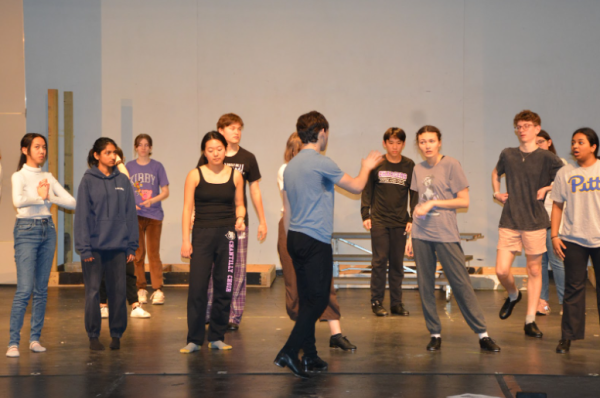The Lost Craft of Cursive
Before this year, many teachers and students dreaded the certification statement on the PSAT which required students to write in cursive, as teachers had to show many how to write in cursive.
In the fast-paced world full of technology, the sight of cursive handwriting is becoming rare. Although cursive writing instruction remains on the Virginia Standards of Learning (SOL) for third grade, many high school students never mastered the art and can barely read cursive, let alone write it.
Handwriting in general and cursive in particular have a positive impact on the human brain. According to a 2014 article published in the New York Times, writing by hand increases idea composition and information retention. Cursive writing also increases fine motor skills, and studies show that children who learn cursive score higher on reading and spelling tests, according to Time magazine.
“[Writing in cursive definitely takes more focus,] so it helps you with your precision,” senior Alice Wang said. “I think even though we don’t use it as much now, we should definitely continue to learn it.”
According to College Board, students who wrote in cursive on the essay portion of the SAT scored slightly higher than those who wrote in normal print.
“I believe that writing in cursive helps to further develop one’s mind and mental processing,” social studies teacher Kenneth Prowell said.
In a study reported by the New York Times in 2014, University of Washington psychologist Virginia Berninger found that children with better handwriting displayed more brain activity in working memory, motor planning and cognition, language and executive functions. Berninger also suggested that cursive writing may strengthen self-control abilities in a way that printing and typing do not. According to the New York Times, writing in cursive may even aid in treating dyslexia.
Although writing in cursive has many benefits, learning the skill is a time-consuming process.
“I don’t really like cursive because it’s like learning a new alphabet for no reason,” freshman Alonso Ralat said. “There’s not really any point in it except for writing signatures.”
Some teachers and students find writing in cursive unnecessary.
“I don’t think it’s important,” French teacher Kelsey Clark said. “I think it’s just fun. Like if you’re doing an assignment for school, I don’t think anybody ever needs to write in cursive, but it’s pretty to look at. So it’s important if you want to make things pretty.”
For better or worse, cursive is becoming a lost art. People don’t usually notice its benefits and the impact that it has.
“Rightly or wrongly, I think someone writing in cursive is demonstrating a higher skill and level of development,” Prowell said. “For me, learning to write in cursive was seen as a transition from being a kid to adulthood, as writing in cursive was seen as more developed and intelligent when I was in elementary school.”
Your donation will support the student journalists of Chantilly High School. Your contribution will allow us to cover our printing and annual website hosting costs.










